Make Up For Ever Chartreuses & Teals Artist Color Shadows Reviews, Photos, Swatches
I340 Lime Green
Make Up For Ever I340 Lime Green Artist Color Shadow ($17.00 for 0.08 oz.) is a bright, light-medium chartreuse green with strong, warm yellow undertones and a pearly sheen. The pigmentation was opaque in a single layer, while the texture was smooth, lightly creamy, and blendable with just enough slip to slide well over the skin but not crease too readily. The color was quite similar to the previous formula, and the texture performed similar in practice but felt less thick and less creamy to the touch (see side-by-side comparison). It wore well for 10 hours on me before fading slightly.
FURTHER READING: Formula Overview for details on general performance and characteristics (like scent).
Top Dupes
- Make Up For Ever I340 Lime Green (DC, $21.00) is lighter, brighter (95% similar).
- MAC Chartreuse Bouquet (LE, $21.00) is darker (95% similar).
- Make Up For Ever I-30 (P, $21.00) is more shimmery (95% similar).
- Terra Moons Castor (P, $6.25) is lighter (95% similar).
- ColourPop Dear Diary (Lizzie Mcguire) (LE, $4.50) is lighter (95% similar).
- MAC Lisa's Spikes (LE, $17.00) is less shimmery, lighter, more muted (90% similar).
- KVD Beauty Birdcage (LE, ) is darker (90% similar).
- ColourPop Healing Heart (LE, $4.50) is lighter, cooler (90% similar).
- Urban Decay Thrash (DC, $19.00) is less shimmery (90% similar).
- MAC Ripped Tee (PiP, ) (90% similar).
Formula Overview
$17.00/0.08 oz. - $212.50 Per Ounce
The original Artist Shadow formula had a creamier, slightly softer, and thicker feel for finishes like Metallic, Iridescent, and Satin, while I felt the original Diamond finish was denser/thicker (heavier almost) and the Matte finish was more powdery but similar in softness and pigmentation (I did not find the original Mattes to be ultra pigmented across the board--semi-opaque to opaque, buildable, which you can see in my original swatches here). By and large, I found the formula to be easy to work with and did not have to spend a lot of time blending or fussing with the shades on the lid.
The new Matte formula has a smoother consistency that has more slip to the touch with less powderiness in the pan, but the pigmentation did seem slightly weaker on average compared to the original formula. The pigmentation of the new Matte formula was still semi-opaque to opaque and buildable but I felt like there were just more shades that were closer to semi-opaque than to opaque.
However, shades like M402 Mimosa showed improvement, as it used to be a Satin (see here) and not as easy to work with due to the denser texture. A lot of the shades were similar in color between the formulas, but there were a few that were not (M546 Dark Purple Taupe was a shade with more significant changes; the new version is warmer and lighter).
Overall, I did not have any issues applying most of the matte shades to the lid, blending them out, or building up coverage. They lasted between nine and ten hours on me, which was actually a bit longer (on average) compared to the original formula, where the mattes tended to wear between seven and eight hours on me (without primer).
The new Satin formula was the most different; it had weaker pigmentation, felt denser and drier with less give and creaminess. In practice, I did not feel like application was harder or noticeably different other than feeling like more of the shades required two layers for more opaque coverage, though some of the more neutral shades were fairly pigmented in a single layer. I also noticed that this particular finish seemed to be the most culled; there weren't that many shades in it, and I wonder if they did not sell well or something about the finish is harder to produce.
There were significant differences in color (and/or undertone) between shades in the new formula and old formula (with the same names) within this finish, too, where most were different rather than only a handful being different. The pigmentation of the new Satin formula was typically semi-opaque and buildable, while they applied evenly, blended out without much effort, and lasted between eight and ten hours (without primer).
The new Iridescent formula was the second most different and more comparable to the Satin finish in terms of overall feel and performance, just with larger shimmer/micro-sparkle. The new formula has a denser consistency (almost "drier" and with less slip) and didn't feel as cream-like, but the powder seemed to pickup better with most brushes and was more consistent in the actual finish--pearly with sparkle--whereas the original formula varied more heavily between pearly and metallic, sparkle and finer shimmer.
There were, however, more substantial color and undertone differences between old and new within this formula, like I saw with the Satin formula. Overall, I did not experience any significant issues applying most of the shades to the lid--they were semi-opaque to opaque, fairly buildable, blendable, and long-wearing (eight to ten hours).
The new Metallic formula was the most consistent between old and new for overall feel, performance, and color. There were, of course, a few shades that seemed lighter/darker, cooler/warmer compared to the previous versions, and all those notes will be made within the respective shade's review. I think the new Metallic finish has a more flattering look on the lid, as the consistency wasn't quite as thick, which should make it apply and appear smoother on the lid for more people.
There were several shades that seemed slightly deeper or less reflective, while others were as reflective as past versions. The majority of the shades of this finish were very pigmented with a moderately dense, lightly creamy texture that blended out well on the lid and wore between nine and ten hours on me.
The new Diamond finish was noticeably less dense/thick, particularly on the lid, which did make it easier to spread across a larger area and easier to pickup with more types of brushes. I was worried that there would be more fallout, but I haven't noticeable much fallout with the new Diamond shades over the eight to ten hours they last for.
Most of them had good pigmentation, though there were a few that were weaker (medium to semi-opaque coverage); a shade like D410 Gold Nugget was a weaker shade before and still is while D326 Lagoon Blue is significantly less pigmented in the new formula.
As I typically do with new eyeshadow formulas, I tested a few shades from each finish over various primers, as I like to see how new formulas interact with different types of primers and if there are any unexpected consequences of using primers (I felt that some of the more silicone-heavy Artist Shadows from before actually applied better without primer).
I didn't notice any ill effects of using primers like Smashbox 24-Hour, Marc Jacobs Coconut Eye Primer, Too Faced Shadow Insurance, or Urban Decay Primer Potion. They all seemed to just help with wear, and with some of the shades that felt drier or had weaker pigmentation, the use of primer seemed to improve initial coverage levels, too.
Browse all of our Make Up For Ever Artist Color Shadow swatches.
Ingredients
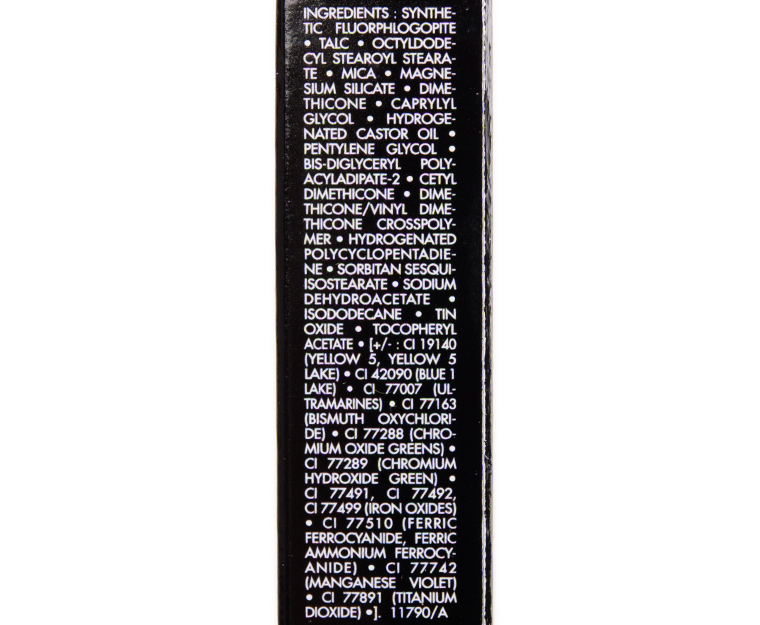
I340 Lime Green
DCDiscontinued. $17.00.
ME338 Acidic Green
Make Up For Ever ME338 Acidic Green Artist Color Shadow ($17.00 for 0.08 oz.) is a bright, light-medium chartreuse green with warm, yellow undertones and a metallic sheen. It had rich color payoff that applied evenly and smoothly to bare skin. The eyeshadow was easy to blend out as the texture was smooth, lightly creamy, but not too thick or too dense. This shade lasted for 10 hours on me before creasing faintly. The previous formulation of the shade was a bit brighter, denser/thicker overall in texture, and seemed to have a bit more shimmer (see side-by-side comparison).
FURTHER READING: Formula Overview for details on general performance and characteristics (like scent).
Top Dupes
- Terra Moons Critical Mass (P, $8.50) is more shimmery, darker (95% similar).
- BH Cosmetics Club Tropicana #5 (LE, ) is lighter (95% similar).
- Sydney Grace Lake Days (P, $8.00) is more shimmery, darker (95% similar).
- JD Glow Lemon Lime (P, $7.50) is more shimmery (95% similar).
- ColourPop Green Goddess (PiP, $4.50) is more shimmery (95% similar).
- Make Up For Ever ME338 Acidic Green (DC, $21.00) is more shimmery, lighter (95% similar).
- Urban Decay Mean (LE, $19.00) is lighter, warmer (90% similar).
- MAC Chartreuse (P, $21.00) is lighter (90% similar).
- Viseart Boheme Dream #2 (LE, ) is more shimmery, lighter (90% similar).
- Makeup Geek Limelight (P, $9.99) is lighter, brighter, warmer (90% similar).
Formula Overview
$17.00/0.08 oz. - $212.50 Per Ounce
The original Artist Shadow formula had a creamier, slightly softer, and thicker feel for finishes like Metallic, Iridescent, and Satin, while I felt the original Diamond finish was denser/thicker (heavier almost) and the Matte finish was more powdery but similar in softness and pigmentation (I did not find the original Mattes to be ultra pigmented across the board--semi-opaque to opaque, buildable, which you can see in my original swatches here). By and large, I found the formula to be easy to work with and did not have to spend a lot of time blending or fussing with the shades on the lid.
The new Matte formula has a smoother consistency that has more slip to the touch with less powderiness in the pan, but the pigmentation did seem slightly weaker on average compared to the original formula. The pigmentation of the new Matte formula was still semi-opaque to opaque and buildable but I felt like there were just more shades that were closer to semi-opaque than to opaque.
However, shades like M402 Mimosa showed improvement, as it used to be a Satin (see here) and not as easy to work with due to the denser texture. A lot of the shades were similar in color between the formulas, but there were a few that were not (M546 Dark Purple Taupe was a shade with more significant changes; the new version is warmer and lighter).
Overall, I did not have any issues applying most of the matte shades to the lid, blending them out, or building up coverage. They lasted between nine and ten hours on me, which was actually a bit longer (on average) compared to the original formula, where the mattes tended to wear between seven and eight hours on me (without primer).
The new Satin formula was the most different; it had weaker pigmentation, felt denser and drier with less give and creaminess. In practice, I did not feel like application was harder or noticeably different other than feeling like more of the shades required two layers for more opaque coverage, though some of the more neutral shades were fairly pigmented in a single layer. I also noticed that this particular finish seemed to be the most culled; there weren't that many shades in it, and I wonder if they did not sell well or something about the finish is harder to produce.
There were significant differences in color (and/or undertone) between shades in the new formula and old formula (with the same names) within this finish, too, where most were different rather than only a handful being different. The pigmentation of the new Satin formula was typically semi-opaque and buildable, while they applied evenly, blended out without much effort, and lasted between eight and ten hours (without primer).
The new Iridescent formula was the second most different and more comparable to the Satin finish in terms of overall feel and performance, just with larger shimmer/micro-sparkle. The new formula has a denser consistency (almost "drier" and with less slip) and didn't feel as cream-like, but the powder seemed to pickup better with most brushes and was more consistent in the actual finish--pearly with sparkle--whereas the original formula varied more heavily between pearly and metallic, sparkle and finer shimmer.
There were, however, more substantial color and undertone differences between old and new within this formula, like I saw with the Satin formula. Overall, I did not experience any significant issues applying most of the shades to the lid--they were semi-opaque to opaque, fairly buildable, blendable, and long-wearing (eight to ten hours).
The new Metallic formula was the most consistent between old and new for overall feel, performance, and color. There were, of course, a few shades that seemed lighter/darker, cooler/warmer compared to the previous versions, and all those notes will be made within the respective shade's review. I think the new Metallic finish has a more flattering look on the lid, as the consistency wasn't quite as thick, which should make it apply and appear smoother on the lid for more people.
There were several shades that seemed slightly deeper or less reflective, while others were as reflective as past versions. The majority of the shades of this finish were very pigmented with a moderately dense, lightly creamy texture that blended out well on the lid and wore between nine and ten hours on me.
The new Diamond finish was noticeably less dense/thick, particularly on the lid, which did make it easier to spread across a larger area and easier to pickup with more types of brushes. I was worried that there would be more fallout, but I haven't noticeable much fallout with the new Diamond shades over the eight to ten hours they last for.
Most of them had good pigmentation, though there were a few that were weaker (medium to semi-opaque coverage); a shade like D410 Gold Nugget was a weaker shade before and still is while D326 Lagoon Blue is significantly less pigmented in the new formula.
As I typically do with new eyeshadow formulas, I tested a few shades from each finish over various primers, as I like to see how new formulas interact with different types of primers and if there are any unexpected consequences of using primers (I felt that some of the more silicone-heavy Artist Shadows from before actually applied better without primer).
I didn't notice any ill effects of using primers like Smashbox 24-Hour, Marc Jacobs Coconut Eye Primer, Too Faced Shadow Insurance, or Urban Decay Primer Potion. They all seemed to just help with wear, and with some of the shades that felt drier or had weaker pigmentation, the use of primer seemed to improve initial coverage levels, too.
Browse all of our Make Up For Ever Artist Color Shadow swatches.
Ingredients

ME338 Acidic Green
DCDiscontinued. $17.00.
ME304 Emerald
Make Up For Ever ME304 Emerald Artist Color Shadow ($17.00 for 0.08 oz.) is a medium-dark, emerald green with subtle, cool undertones and a frosted finish. It had good color coverage in a single layer, which was buildable to full coverage with a touch more layered on top. The consistency was smooth to the touch but thinner and slightly stiff in the pan, so I needed to use a heavier hand to pickup product well with my brush. The eyeshadow blended out nicely on my lid, though, and stayed on well for 10 hours. The previous formula had a creamier feel, which yielded plusher, slightly richer color and pigmentation (see side-by-side comparison).
FURTHER READING: Formula Overview for details on general performance and characteristics (like scent).
Top Dupes
- ColourPop Bungalow (P, $9.00) is darker (95% similar).
- Make Up For Ever ME304 Emerald (DC, $21.00) is more shimmery, lighter, better quality (90% similar).
- Buxom Pre-nup (P, $12.00) is lighter (90% similar).
- Tarte Color Explosion (LE, ) is more shimmery, lighter (90% similar).
- KVD Beauty Iggy (DC, $21.00) is more shimmery, brighter, cooler (90% similar).
- Sydney Grace Borealis (PiP, $6.25) is more shimmery, lighter (90% similar).
- YSL Misty Green (09) (P, $30.00) is less shimmery (90% similar).
- Guerlain Electric Look #8 (LE, ) is less shimmery, darker, warmer (90% similar).
- ColourPop The Bull (LE, $6.00) is more shimmery (90% similar).
- KVD Beauty Leafar (LE, ) is lighter (90% similar).
Formula Overview
$17.00/0.08 oz. - $212.50 Per Ounce
The original Artist Shadow formula had a creamier, slightly softer, and thicker feel for finishes like Metallic, Iridescent, and Satin, while I felt the original Diamond finish was denser/thicker (heavier almost) and the Matte finish was more powdery but similar in softness and pigmentation (I did not find the original Mattes to be ultra pigmented across the board--semi-opaque to opaque, buildable, which you can see in my original swatches here). By and large, I found the formula to be easy to work with and did not have to spend a lot of time blending or fussing with the shades on the lid.
The new Matte formula has a smoother consistency that has more slip to the touch with less powderiness in the pan, but the pigmentation did seem slightly weaker on average compared to the original formula. The pigmentation of the new Matte formula was still semi-opaque to opaque and buildable but I felt like there were just more shades that were closer to semi-opaque than to opaque.
However, shades like M402 Mimosa showed improvement, as it used to be a Satin (see here) and not as easy to work with due to the denser texture. A lot of the shades were similar in color between the formulas, but there were a few that were not (M546 Dark Purple Taupe was a shade with more significant changes; the new version is warmer and lighter).
Overall, I did not have any issues applying most of the matte shades to the lid, blending them out, or building up coverage. They lasted between nine and ten hours on me, which was actually a bit longer (on average) compared to the original formula, where the mattes tended to wear between seven and eight hours on me (without primer).
The new Satin formula was the most different; it had weaker pigmentation, felt denser and drier with less give and creaminess. In practice, I did not feel like application was harder or noticeably different other than feeling like more of the shades required two layers for more opaque coverage, though some of the more neutral shades were fairly pigmented in a single layer. I also noticed that this particular finish seemed to be the most culled; there weren't that many shades in it, and I wonder if they did not sell well or something about the finish is harder to produce.
There were significant differences in color (and/or undertone) between shades in the new formula and old formula (with the same names) within this finish, too, where most were different rather than only a handful being different. The pigmentation of the new Satin formula was typically semi-opaque and buildable, while they applied evenly, blended out without much effort, and lasted between eight and ten hours (without primer).
The new Iridescent formula was the second most different and more comparable to the Satin finish in terms of overall feel and performance, just with larger shimmer/micro-sparkle. The new formula has a denser consistency (almost "drier" and with less slip) and didn't feel as cream-like, but the powder seemed to pickup better with most brushes and was more consistent in the actual finish--pearly with sparkle--whereas the original formula varied more heavily between pearly and metallic, sparkle and finer shimmer.
There were, however, more substantial color and undertone differences between old and new within this formula, like I saw with the Satin formula. Overall, I did not experience any significant issues applying most of the shades to the lid--they were semi-opaque to opaque, fairly buildable, blendable, and long-wearing (eight to ten hours).
The new Metallic formula was the most consistent between old and new for overall feel, performance, and color. There were, of course, a few shades that seemed lighter/darker, cooler/warmer compared to the previous versions, and all those notes will be made within the respective shade's review. I think the new Metallic finish has a more flattering look on the lid, as the consistency wasn't quite as thick, which should make it apply and appear smoother on the lid for more people.
There were several shades that seemed slightly deeper or less reflective, while others were as reflective as past versions. The majority of the shades of this finish were very pigmented with a moderately dense, lightly creamy texture that blended out well on the lid and wore between nine and ten hours on me.
The new Diamond finish was noticeably less dense/thick, particularly on the lid, which did make it easier to spread across a larger area and easier to pickup with more types of brushes. I was worried that there would be more fallout, but I haven't noticeable much fallout with the new Diamond shades over the eight to ten hours they last for.
Most of them had good pigmentation, though there were a few that were weaker (medium to semi-opaque coverage); a shade like D410 Gold Nugget was a weaker shade before and still is while D326 Lagoon Blue is significantly less pigmented in the new formula.
As I typically do with new eyeshadow formulas, I tested a few shades from each finish over various primers, as I like to see how new formulas interact with different types of primers and if there are any unexpected consequences of using primers (I felt that some of the more silicone-heavy Artist Shadows from before actually applied better without primer).
I didn't notice any ill effects of using primers like Smashbox 24-Hour, Marc Jacobs Coconut Eye Primer, Too Faced Shadow Insurance, or Urban Decay Primer Potion. They all seemed to just help with wear, and with some of the shades that felt drier or had weaker pigmentation, the use of primer seemed to improve initial coverage levels, too.
Browse all of our Make Up For Ever Artist Color Shadow swatches.
Ingredients
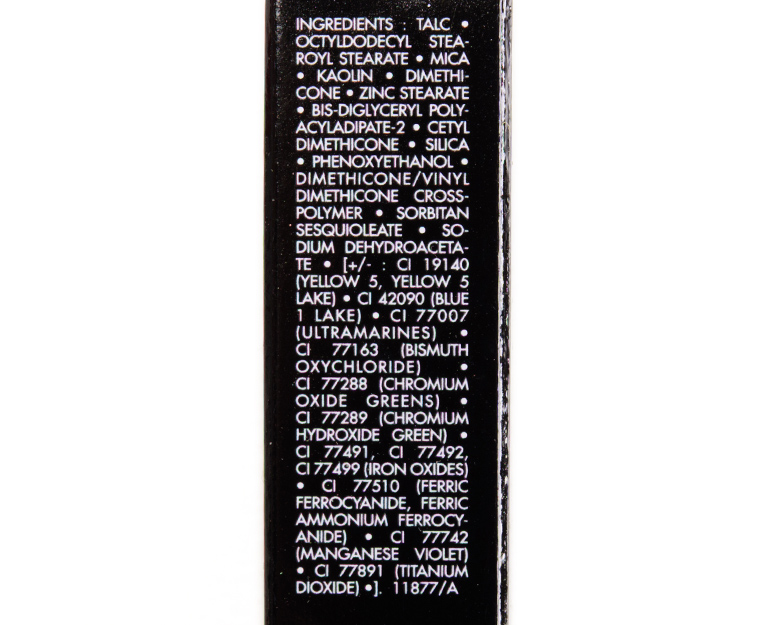
ME304 Emerald
PPermanent. $17.00.
S228 Petrol Blue
Make Up For Ever S228 Petrol Blue Artist Color Shadow ($17.00 for 0.08 oz.) is a medium-dark, green-leaning teal with a subtle, satin finish. It had medium color coverage that was buildable to mostly opaque coverage with two to three layers. The eyeshadow felt smooth to the touch but was denser and a bit stiffer overall, which I think was part of why it did not swatch well, but I found it was rather easy to work with in practice on the lid (possibly as one uses one shade on a much smaller area). It blended out fairly well and lasted for nine and a half hours on me. I think the brand should have renamed this one, as the new version is much lighter and green-based, whereas the previous version was darker and firmly in the blue family (see side-by-side comparison).
FURTHER READING: Formula Overview for details on general performance and characteristics (like scent).
Top Dupes
- Cle de Peau Les Annees Folles #5 (LE, ) is cooler (95% similar).
- Makeup Geek Sea Mist (DC, $6.00) is lighter (95% similar).
- Viseart Dark Matte #11 (PiP, ) is darker, warmer (90% similar).
- MAC Green Room (LE, $17.00) is less shimmery (90% similar).
- Sephora Malachite (PiP, ) is less shimmery (90% similar).
- ColourPop Donna (LE, $6.00) is more shimmery (90% similar).
- MAC Ever Evergreen (LE, $22.00) is lighter (90% similar).
- NARS Tropic (P, $19.00) is more shimmery, lighter (90% similar).
- Melt Cosmetics Meltdown (PiP, ) is less shimmery, cooler (85% similar).
- Tom Ford Beauty Photosynthesex #4 (PiP, ) is less shimmery, darker, cooler (85% similar).
Formula Overview
$17.00/0.08 oz. - $212.50 Per Ounce
The original Artist Shadow formula had a creamier, slightly softer, and thicker feel for finishes like Metallic, Iridescent, and Satin, while I felt the original Diamond finish was denser/thicker (heavier almost) and the Matte finish was more powdery but similar in softness and pigmentation (I did not find the original Mattes to be ultra pigmented across the board--semi-opaque to opaque, buildable, which you can see in my original swatches here). By and large, I found the formula to be easy to work with and did not have to spend a lot of time blending or fussing with the shades on the lid.
The new Matte formula has a smoother consistency that has more slip to the touch with less powderiness in the pan, but the pigmentation did seem slightly weaker on average compared to the original formula. The pigmentation of the new Matte formula was still semi-opaque to opaque and buildable but I felt like there were just more shades that were closer to semi-opaque than to opaque.
However, shades like M402 Mimosa showed improvement, as it used to be a Satin (see here) and not as easy to work with due to the denser texture. A lot of the shades were similar in color between the formulas, but there were a few that were not (M546 Dark Purple Taupe was a shade with more significant changes; the new version is warmer and lighter).
Overall, I did not have any issues applying most of the matte shades to the lid, blending them out, or building up coverage. They lasted between nine and ten hours on me, which was actually a bit longer (on average) compared to the original formula, where the mattes tended to wear between seven and eight hours on me (without primer).
The new Satin formula was the most different; it had weaker pigmentation, felt denser and drier with less give and creaminess. In practice, I did not feel like application was harder or noticeably different other than feeling like more of the shades required two layers for more opaque coverage, though some of the more neutral shades were fairly pigmented in a single layer. I also noticed that this particular finish seemed to be the most culled; there weren't that many shades in it, and I wonder if they did not sell well or something about the finish is harder to produce.
There were significant differences in color (and/or undertone) between shades in the new formula and old formula (with the same names) within this finish, too, where most were different rather than only a handful being different. The pigmentation of the new Satin formula was typically semi-opaque and buildable, while they applied evenly, blended out without much effort, and lasted between eight and ten hours (without primer).
The new Iridescent formula was the second most different and more comparable to the Satin finish in terms of overall feel and performance, just with larger shimmer/micro-sparkle. The new formula has a denser consistency (almost "drier" and with less slip) and didn't feel as cream-like, but the powder seemed to pickup better with most brushes and was more consistent in the actual finish--pearly with sparkle--whereas the original formula varied more heavily between pearly and metallic, sparkle and finer shimmer.
There were, however, more substantial color and undertone differences between old and new within this formula, like I saw with the Satin formula. Overall, I did not experience any significant issues applying most of the shades to the lid--they were semi-opaque to opaque, fairly buildable, blendable, and long-wearing (eight to ten hours).
The new Metallic formula was the most consistent between old and new for overall feel, performance, and color. There were, of course, a few shades that seemed lighter/darker, cooler/warmer compared to the previous versions, and all those notes will be made within the respective shade's review. I think the new Metallic finish has a more flattering look on the lid, as the consistency wasn't quite as thick, which should make it apply and appear smoother on the lid for more people.
There were several shades that seemed slightly deeper or less reflective, while others were as reflective as past versions. The majority of the shades of this finish were very pigmented with a moderately dense, lightly creamy texture that blended out well on the lid and wore between nine and ten hours on me.
The new Diamond finish was noticeably less dense/thick, particularly on the lid, which did make it easier to spread across a larger area and easier to pickup with more types of brushes. I was worried that there would be more fallout, but I haven't noticeable much fallout with the new Diamond shades over the eight to ten hours they last for.
Most of them had good pigmentation, though there were a few that were weaker (medium to semi-opaque coverage); a shade like D410 Gold Nugget was a weaker shade before and still is while D326 Lagoon Blue is significantly less pigmented in the new formula.
As I typically do with new eyeshadow formulas, I tested a few shades from each finish over various primers, as I like to see how new formulas interact with different types of primers and if there are any unexpected consequences of using primers (I felt that some of the more silicone-heavy Artist Shadows from before actually applied better without primer).
I didn't notice any ill effects of using primers like Smashbox 24-Hour, Marc Jacobs Coconut Eye Primer, Too Faced Shadow Insurance, or Urban Decay Primer Potion. They all seemed to just help with wear, and with some of the shades that felt drier or had weaker pigmentation, the use of primer seemed to improve initial coverage levels, too.
Browse all of our Make Up For Ever Artist Color Shadow swatches.
Ingredients
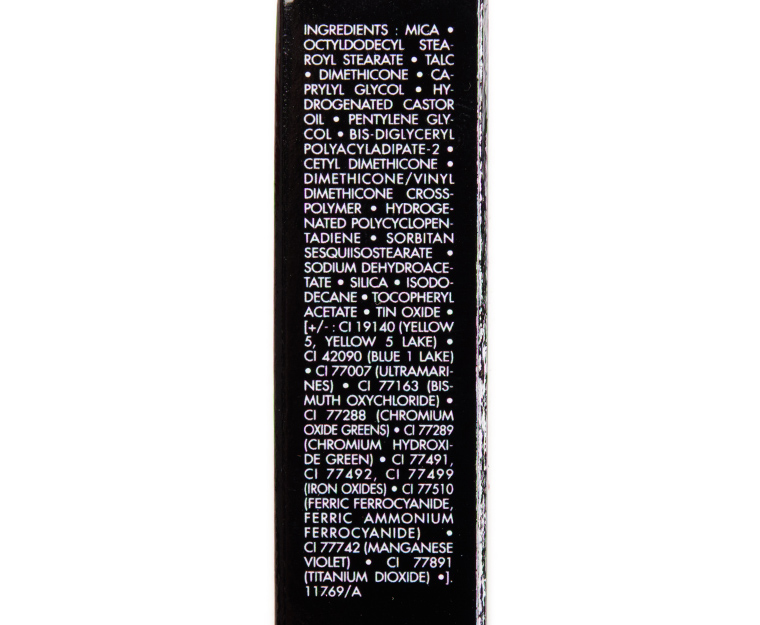
S228 Petrol Blue
DCDiscontinued. $17.00.
S238 Blue Cedar
Make Up For Ever S238 Blue Cedar Artist Color Shadow ($17.00 for 0.08 oz.) is a muted, medium-dark bluish-teal with subtle, cool undertones and a pearly shimmer. It had semi-opaque pigmentation, but there was a faded quality to the color on the skin that wasn’t as present in the pan–it just looked lighter and less rich in practice. The texture was smooth to the touch but was firmer and thinner, though I was able to blend out the edges without any issues. It wore well for nine and a half hours on me before fading noticeably. The new version of this shade switched from an Iridescent to Satin finish, but the colors are completely different with the original shade being a brighter blue (see side-by-side comparison) that was also a lot more pigmented with a creamier consistency.
FURTHER READING: Formula Overview for details on general performance and characteristics (like scent).
Top Dupes
- Makeup Geek Sea Mist (DC, $6.00) is darker (95% similar).
- MAC Ever Evergreen (LE, $22.00) is lighter (90% similar).
- Cle de Peau Les Annees Folles #5 (LE, ) is darker, cooler (90% similar).
- MAC Green Room (LE, $17.00) is less shimmery (90% similar).
- ColourPop Donna (LE, $6.00) is darker (90% similar).
- NABLA Cosmetics Babylon (P, $8.00) is darker (85% similar).
- Viseart Dark Matte #11 (PiP, ) is darker, warmer (85% similar).
- Too Faced Too Glam (LE, $16.00) is more shimmery, darker, brighter (85% similar).
- MAC Emerald Power (LE, $22.00) is darker, brighter (85% similar).
- Charlotte Tilbury The Rebel #4 (DC, ) is darker (80% similar).
Formula Overview
$17.00/0.08 oz. - $212.50 Per Ounce
The original Artist Shadow formula had a creamier, slightly softer, and thicker feel for finishes like Metallic, Iridescent, and Satin, while I felt the original Diamond finish was denser/thicker (heavier almost) and the Matte finish was more powdery but similar in softness and pigmentation (I did not find the original Mattes to be ultra pigmented across the board--semi-opaque to opaque, buildable, which you can see in my original swatches here). By and large, I found the formula to be easy to work with and did not have to spend a lot of time blending or fussing with the shades on the lid.
The new Matte formula has a smoother consistency that has more slip to the touch with less powderiness in the pan, but the pigmentation did seem slightly weaker on average compared to the original formula. The pigmentation of the new Matte formula was still semi-opaque to opaque and buildable but I felt like there were just more shades that were closer to semi-opaque than to opaque.
However, shades like M402 Mimosa showed improvement, as it used to be a Satin (see here) and not as easy to work with due to the denser texture. A lot of the shades were similar in color between the formulas, but there were a few that were not (M546 Dark Purple Taupe was a shade with more significant changes; the new version is warmer and lighter).
Overall, I did not have any issues applying most of the matte shades to the lid, blending them out, or building up coverage. They lasted between nine and ten hours on me, which was actually a bit longer (on average) compared to the original formula, where the mattes tended to wear between seven and eight hours on me (without primer).
The new Satin formula was the most different; it had weaker pigmentation, felt denser and drier with less give and creaminess. In practice, I did not feel like application was harder or noticeably different other than feeling like more of the shades required two layers for more opaque coverage, though some of the more neutral shades were fairly pigmented in a single layer. I also noticed that this particular finish seemed to be the most culled; there weren't that many shades in it, and I wonder if they did not sell well or something about the finish is harder to produce.
There were significant differences in color (and/or undertone) between shades in the new formula and old formula (with the same names) within this finish, too, where most were different rather than only a handful being different. The pigmentation of the new Satin formula was typically semi-opaque and buildable, while they applied evenly, blended out without much effort, and lasted between eight and ten hours (without primer).
The new Iridescent formula was the second most different and more comparable to the Satin finish in terms of overall feel and performance, just with larger shimmer/micro-sparkle. The new formula has a denser consistency (almost "drier" and with less slip) and didn't feel as cream-like, but the powder seemed to pickup better with most brushes and was more consistent in the actual finish--pearly with sparkle--whereas the original formula varied more heavily between pearly and metallic, sparkle and finer shimmer.
There were, however, more substantial color and undertone differences between old and new within this formula, like I saw with the Satin formula. Overall, I did not experience any significant issues applying most of the shades to the lid--they were semi-opaque to opaque, fairly buildable, blendable, and long-wearing (eight to ten hours).
The new Metallic formula was the most consistent between old and new for overall feel, performance, and color. There were, of course, a few shades that seemed lighter/darker, cooler/warmer compared to the previous versions, and all those notes will be made within the respective shade's review. I think the new Metallic finish has a more flattering look on the lid, as the consistency wasn't quite as thick, which should make it apply and appear smoother on the lid for more people.
There were several shades that seemed slightly deeper or less reflective, while others were as reflective as past versions. The majority of the shades of this finish were very pigmented with a moderately dense, lightly creamy texture that blended out well on the lid and wore between nine and ten hours on me.
The new Diamond finish was noticeably less dense/thick, particularly on the lid, which did make it easier to spread across a larger area and easier to pickup with more types of brushes. I was worried that there would be more fallout, but I haven't noticeable much fallout with the new Diamond shades over the eight to ten hours they last for.
Most of them had good pigmentation, though there were a few that were weaker (medium to semi-opaque coverage); a shade like D410 Gold Nugget was a weaker shade before and still is while D326 Lagoon Blue is significantly less pigmented in the new formula.
As I typically do with new eyeshadow formulas, I tested a few shades from each finish over various primers, as I like to see how new formulas interact with different types of primers and if there are any unexpected consequences of using primers (I felt that some of the more silicone-heavy Artist Shadows from before actually applied better without primer).
I didn't notice any ill effects of using primers like Smashbox 24-Hour, Marc Jacobs Coconut Eye Primer, Too Faced Shadow Insurance, or Urban Decay Primer Potion. They all seemed to just help with wear, and with some of the shades that felt drier or had weaker pigmentation, the use of primer seemed to improve initial coverage levels, too.
Browse all of our Make Up For Ever Artist Color Shadow swatches.
Ingredients

S238 Blue Cedar
DCDiscontinued. $17.00.
M240 Prussian Blue
Make Up For Ever M240 Prussian Blue Artist Color Shadow ($17.00 for 0.08 oz.) is a muted, deep teal with subtle, cool undertones and a matte finish. It had medium coverage, which was buildable to semi-opaque pigmentation in two layers. The texture was thinner, a little dusty but soft to the touch and blendable on the lid. The new version is slightly deeper and less pigmented than the older version, though I found the new one to sit better on the lid and blend out better (see side-by-side comparison). The eyeshadow lasted for nine and a half hours on me.
FURTHER READING: Formula Overview for details on general performance and characteristics (like scent).
Top Dupes
- MAC Plumage (P, $17.00) is lighter (95% similar).
- Chanel Road Movie #3 (PiP, ) is cooler (95% similar).
- ColourPop Burnout (LE, $4.50) is lighter, cooler (95% similar).
- Make Up For Ever M240 Prussian Blue (DC, $21.00) is lighter (90% similar).
- Chanel Quiet Revolution #2 (PiP, ) is lighter, brighter (90% similar).
- NYX Shameless (P, $4.50) is brighter, cooler (90% similar).
- Too Faced Blue Satin Sashes (LE, $16.00) (90% similar).
- YSL Fetiche #5 (LE, ) is lighter (90% similar).
- ColourPop Vibra (LE, $4.50) is darker, cooler (90% similar).
- ColourPop Water Bearer (PiP, $4.50) is darker (95% similar).
Formula Overview
$17.00/0.08 oz. - $212.50 Per Ounce
The original Artist Shadow formula had a creamier, slightly softer, and thicker feel for finishes like Metallic, Iridescent, and Satin, while I felt the original Diamond finish was denser/thicker (heavier almost) and the Matte finish was more powdery but similar in softness and pigmentation (I did not find the original Mattes to be ultra pigmented across the board--semi-opaque to opaque, buildable, which you can see in my original swatches here). By and large, I found the formula to be easy to work with and did not have to spend a lot of time blending or fussing with the shades on the lid.
The new Matte formula has a smoother consistency that has more slip to the touch with less powderiness in the pan, but the pigmentation did seem slightly weaker on average compared to the original formula. The pigmentation of the new Matte formula was still semi-opaque to opaque and buildable but I felt like there were just more shades that were closer to semi-opaque than to opaque.
However, shades like M402 Mimosa showed improvement, as it used to be a Satin (see here) and not as easy to work with due to the denser texture. A lot of the shades were similar in color between the formulas, but there were a few that were not (M546 Dark Purple Taupe was a shade with more significant changes; the new version is warmer and lighter).
Overall, I did not have any issues applying most of the matte shades to the lid, blending them out, or building up coverage. They lasted between nine and ten hours on me, which was actually a bit longer (on average) compared to the original formula, where the mattes tended to wear between seven and eight hours on me (without primer).
The new Satin formula was the most different; it had weaker pigmentation, felt denser and drier with less give and creaminess. In practice, I did not feel like application was harder or noticeably different other than feeling like more of the shades required two layers for more opaque coverage, though some of the more neutral shades were fairly pigmented in a single layer. I also noticed that this particular finish seemed to be the most culled; there weren't that many shades in it, and I wonder if they did not sell well or something about the finish is harder to produce.
There were significant differences in color (and/or undertone) between shades in the new formula and old formula (with the same names) within this finish, too, where most were different rather than only a handful being different. The pigmentation of the new Satin formula was typically semi-opaque and buildable, while they applied evenly, blended out without much effort, and lasted between eight and ten hours (without primer).
The new Iridescent formula was the second most different and more comparable to the Satin finish in terms of overall feel and performance, just with larger shimmer/micro-sparkle. The new formula has a denser consistency (almost "drier" and with less slip) and didn't feel as cream-like, but the powder seemed to pickup better with most brushes and was more consistent in the actual finish--pearly with sparkle--whereas the original formula varied more heavily between pearly and metallic, sparkle and finer shimmer.
There were, however, more substantial color and undertone differences between old and new within this formula, like I saw with the Satin formula. Overall, I did not experience any significant issues applying most of the shades to the lid--they were semi-opaque to opaque, fairly buildable, blendable, and long-wearing (eight to ten hours).
The new Metallic formula was the most consistent between old and new for overall feel, performance, and color. There were, of course, a few shades that seemed lighter/darker, cooler/warmer compared to the previous versions, and all those notes will be made within the respective shade's review. I think the new Metallic finish has a more flattering look on the lid, as the consistency wasn't quite as thick, which should make it apply and appear smoother on the lid for more people.
There were several shades that seemed slightly deeper or less reflective, while others were as reflective as past versions. The majority of the shades of this finish were very pigmented with a moderately dense, lightly creamy texture that blended out well on the lid and wore between nine and ten hours on me.
The new Diamond finish was noticeably less dense/thick, particularly on the lid, which did make it easier to spread across a larger area and easier to pickup with more types of brushes. I was worried that there would be more fallout, but I haven't noticeable much fallout with the new Diamond shades over the eight to ten hours they last for.
Most of them had good pigmentation, though there were a few that were weaker (medium to semi-opaque coverage); a shade like D410 Gold Nugget was a weaker shade before and still is while D326 Lagoon Blue is significantly less pigmented in the new formula.
As I typically do with new eyeshadow formulas, I tested a few shades from each finish over various primers, as I like to see how new formulas interact with different types of primers and if there are any unexpected consequences of using primers (I felt that some of the more silicone-heavy Artist Shadows from before actually applied better without primer).
I didn't notice any ill effects of using primers like Smashbox 24-Hour, Marc Jacobs Coconut Eye Primer, Too Faced Shadow Insurance, or Urban Decay Primer Potion. They all seemed to just help with wear, and with some of the shades that felt drier or had weaker pigmentation, the use of primer seemed to improve initial coverage levels, too.
Browse all of our Make Up For Ever Artist Color Shadow swatches.
Ingredients
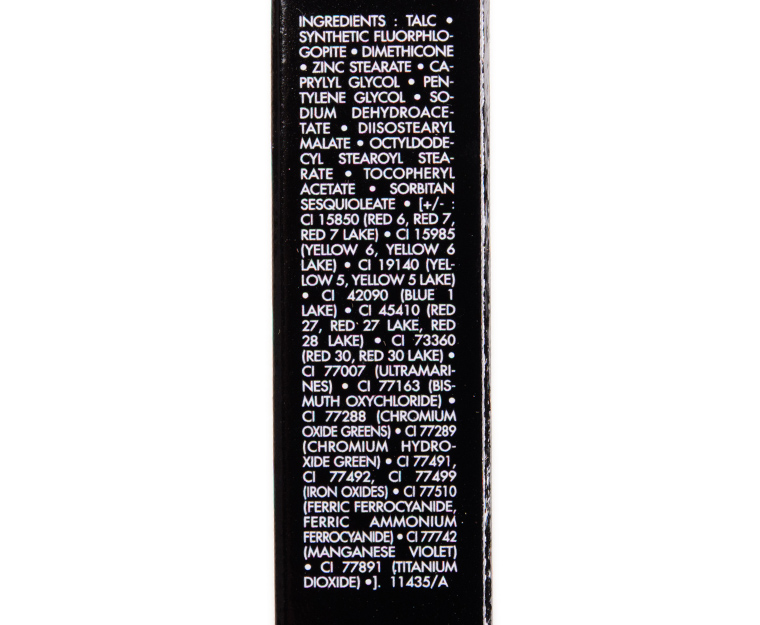
M240 Prussian Blue
PPermanent. $17.00.
S516 Sand
Make Up For Ever S516 Sand Artist Color Shadow ($17.00 for 0.08 oz.) is a light-medium yellow with stronger, warm undertones and a pearly sheen. The bigger downside was it did not swatch remotely close to how the color appeared in the pan. It had excellent pigmentation with a smooth, blendable consistency that wasn’t powdery nor was it too firmly pressed in the pan. The color stayed on well for 10 hours on me. Unfortunately, as was common in the Satin finish, there wasn’t consistency in color between the original formula and the new one; the original shade was darker and more of a peach/orange than a yellow (see side-by-side comparison).
FURTHER READING: Formula Overview for details on general performance and characteristics (like scent).
Top Dupes
- theBalm #29 (P, $6.50) is darker (95% similar).
- Too Faced Yum-Yum (PiP, $16.00) is less shimmery, lighter, cooler (90% similar).
- Guerlain Enjoy (LE, $34.00) is less shimmery, lighter (90% similar).
- MAC Big Kahuna (LE, $17.00) is darker (90% similar).
- Makeup Geek Mirage (DC, $6.00) is less shimmery, lighter (90% similar).
- Dior Expose #4 (PiP, ) is darker (90% similar).
- Make Up For Ever S404 Straw Yellow (DC, $21.00) is darker (90% similar).
- Marc Jacobs Beauty The Dreamer #3 (PiP, ) is lighter (90% similar).
- NARS Goldfinger (P, $19.00) is more shimmery, cooler (90% similar).
- theBalm #12 (P, $6.50) is darker (90% similar).
Formula Overview
$17.00/0.08 oz. - $212.50 Per Ounce
The original Artist Shadow formula had a creamier, slightly softer, and thicker feel for finishes like Metallic, Iridescent, and Satin, while I felt the original Diamond finish was denser/thicker (heavier almost) and the Matte finish was more powdery but similar in softness and pigmentation (I did not find the original Mattes to be ultra pigmented across the board--semi-opaque to opaque, buildable, which you can see in my original swatches here). By and large, I found the formula to be easy to work with and did not have to spend a lot of time blending or fussing with the shades on the lid.
The new Matte formula has a smoother consistency that has more slip to the touch with less powderiness in the pan, but the pigmentation did seem slightly weaker on average compared to the original formula. The pigmentation of the new Matte formula was still semi-opaque to opaque and buildable but I felt like there were just more shades that were closer to semi-opaque than to opaque.
However, shades like M402 Mimosa showed improvement, as it used to be a Satin (see here) and not as easy to work with due to the denser texture. A lot of the shades were similar in color between the formulas, but there were a few that were not (M546 Dark Purple Taupe was a shade with more significant changes; the new version is warmer and lighter).
Overall, I did not have any issues applying most of the matte shades to the lid, blending them out, or building up coverage. They lasted between nine and ten hours on me, which was actually a bit longer (on average) compared to the original formula, where the mattes tended to wear between seven and eight hours on me (without primer).
The new Satin formula was the most different; it had weaker pigmentation, felt denser and drier with less give and creaminess. In practice, I did not feel like application was harder or noticeably different other than feeling like more of the shades required two layers for more opaque coverage, though some of the more neutral shades were fairly pigmented in a single layer. I also noticed that this particular finish seemed to be the most culled; there weren't that many shades in it, and I wonder if they did not sell well or something about the finish is harder to produce.
There were significant differences in color (and/or undertone) between shades in the new formula and old formula (with the same names) within this finish, too, where most were different rather than only a handful being different. The pigmentation of the new Satin formula was typically semi-opaque and buildable, while they applied evenly, blended out without much effort, and lasted between eight and ten hours (without primer).
The new Iridescent formula was the second most different and more comparable to the Satin finish in terms of overall feel and performance, just with larger shimmer/micro-sparkle. The new formula has a denser consistency (almost "drier" and with less slip) and didn't feel as cream-like, but the powder seemed to pickup better with most brushes and was more consistent in the actual finish--pearly with sparkle--whereas the original formula varied more heavily between pearly and metallic, sparkle and finer shimmer.
There were, however, more substantial color and undertone differences between old and new within this formula, like I saw with the Satin formula. Overall, I did not experience any significant issues applying most of the shades to the lid--they were semi-opaque to opaque, fairly buildable, blendable, and long-wearing (eight to ten hours).
The new Metallic formula was the most consistent between old and new for overall feel, performance, and color. There were, of course, a few shades that seemed lighter/darker, cooler/warmer compared to the previous versions, and all those notes will be made within the respective shade's review. I think the new Metallic finish has a more flattering look on the lid, as the consistency wasn't quite as thick, which should make it apply and appear smoother on the lid for more people.
There were several shades that seemed slightly deeper or less reflective, while others were as reflective as past versions. The majority of the shades of this finish were very pigmented with a moderately dense, lightly creamy texture that blended out well on the lid and wore between nine and ten hours on me.
The new Diamond finish was noticeably less dense/thick, particularly on the lid, which did make it easier to spread across a larger area and easier to pickup with more types of brushes. I was worried that there would be more fallout, but I haven't noticeable much fallout with the new Diamond shades over the eight to ten hours they last for.
Most of them had good pigmentation, though there were a few that were weaker (medium to semi-opaque coverage); a shade like D410 Gold Nugget was a weaker shade before and still is while D326 Lagoon Blue is significantly less pigmented in the new formula.
As I typically do with new eyeshadow formulas, I tested a few shades from each finish over various primers, as I like to see how new formulas interact with different types of primers and if there are any unexpected consequences of using primers (I felt that some of the more silicone-heavy Artist Shadows from before actually applied better without primer).
I didn't notice any ill effects of using primers like Smashbox 24-Hour, Marc Jacobs Coconut Eye Primer, Too Faced Shadow Insurance, or Urban Decay Primer Potion. They all seemed to just help with wear, and with some of the shades that felt drier or had weaker pigmentation, the use of primer seemed to improve initial coverage levels, too.
Browse all of our Make Up For Ever Artist Color Shadow swatches.
Ingredients
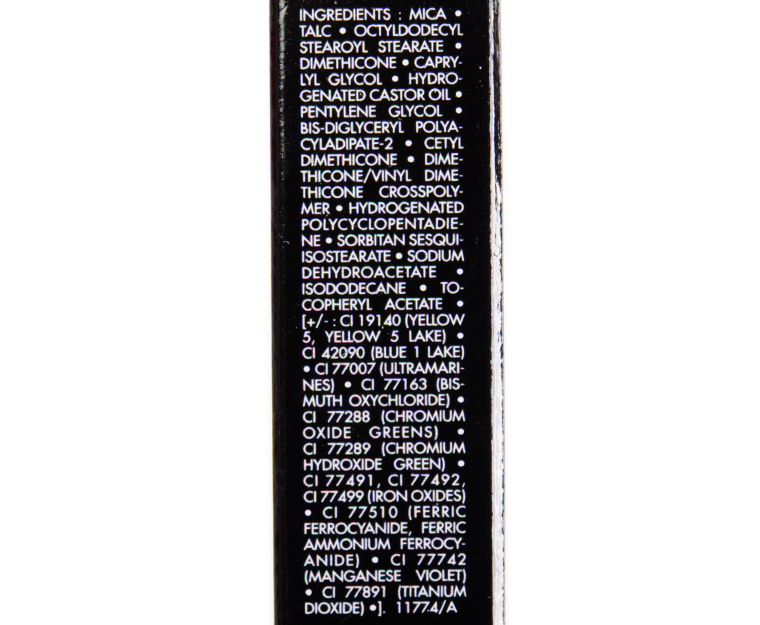




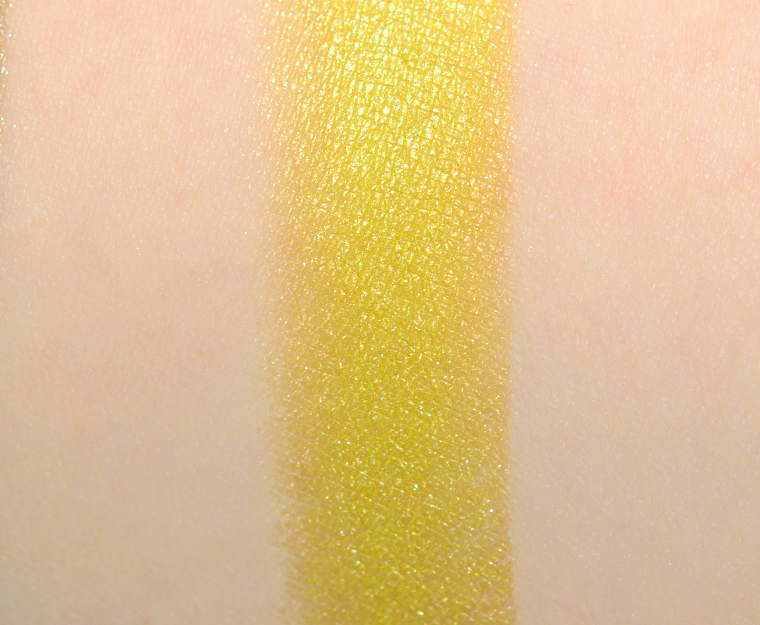

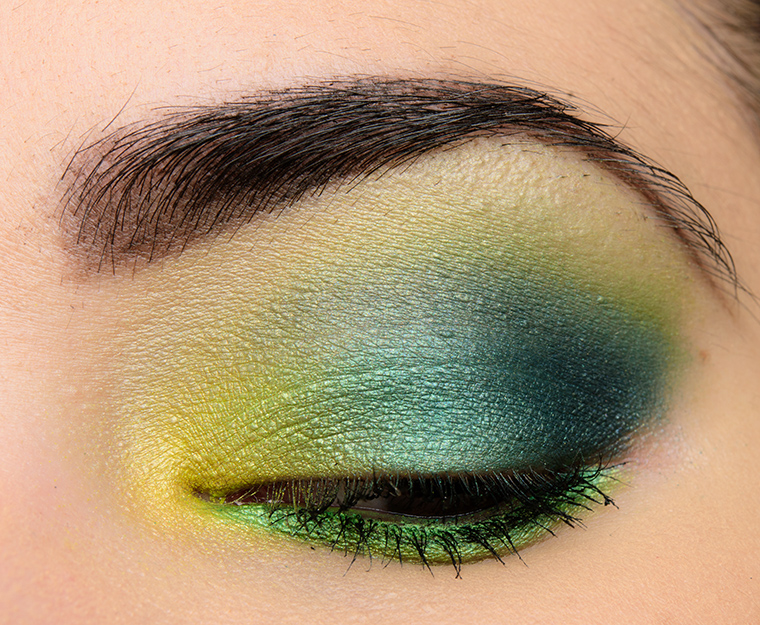









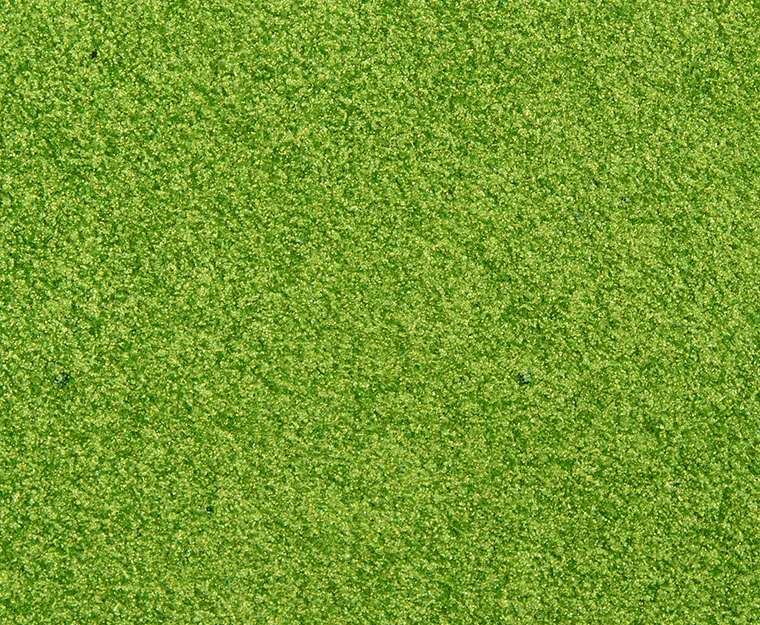
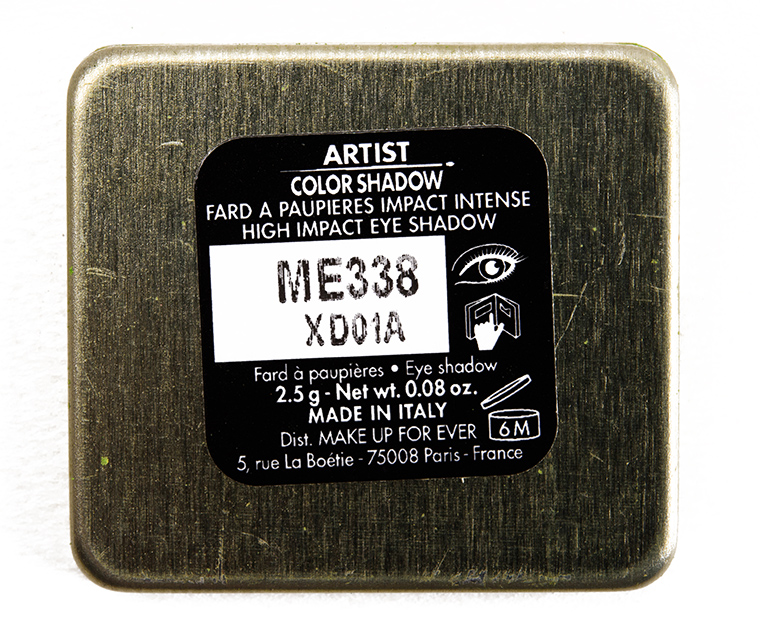
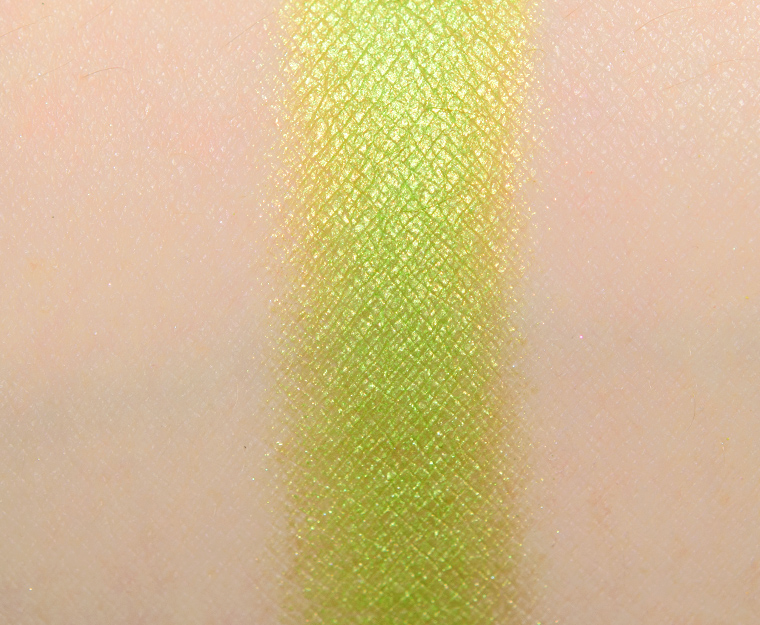






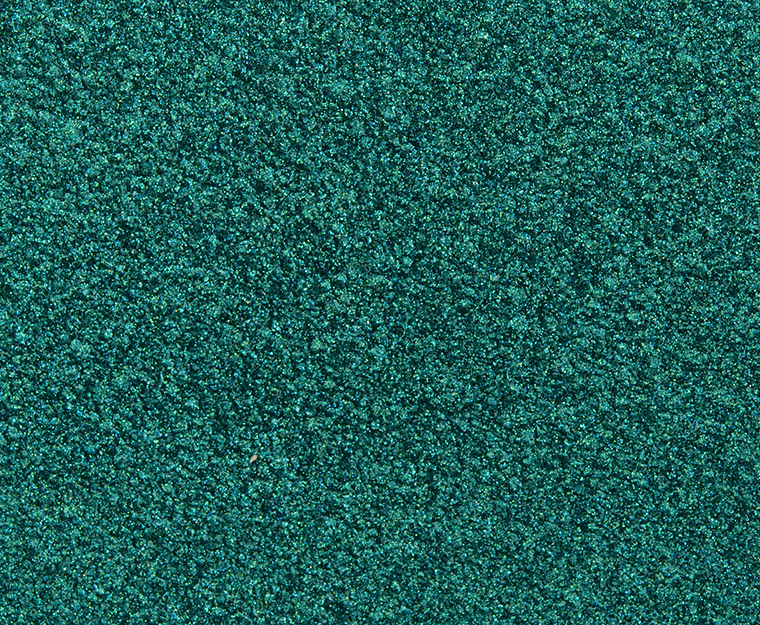
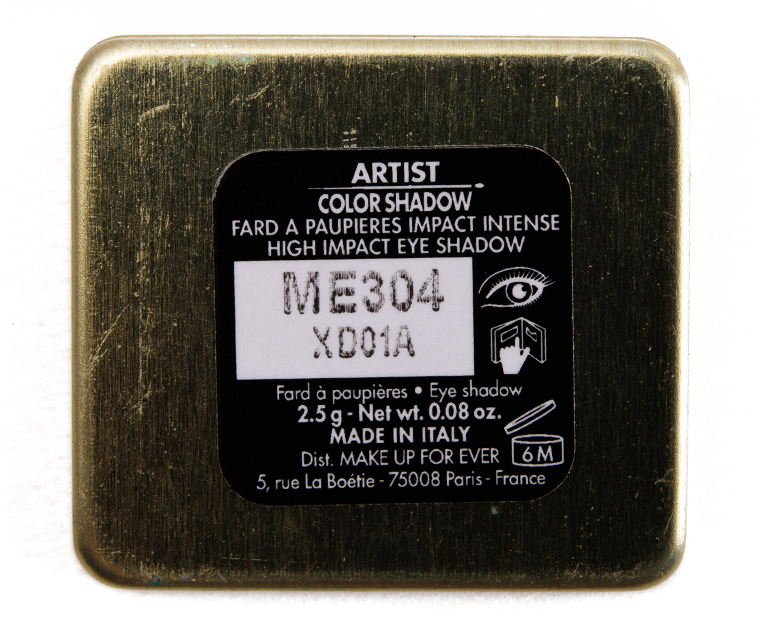







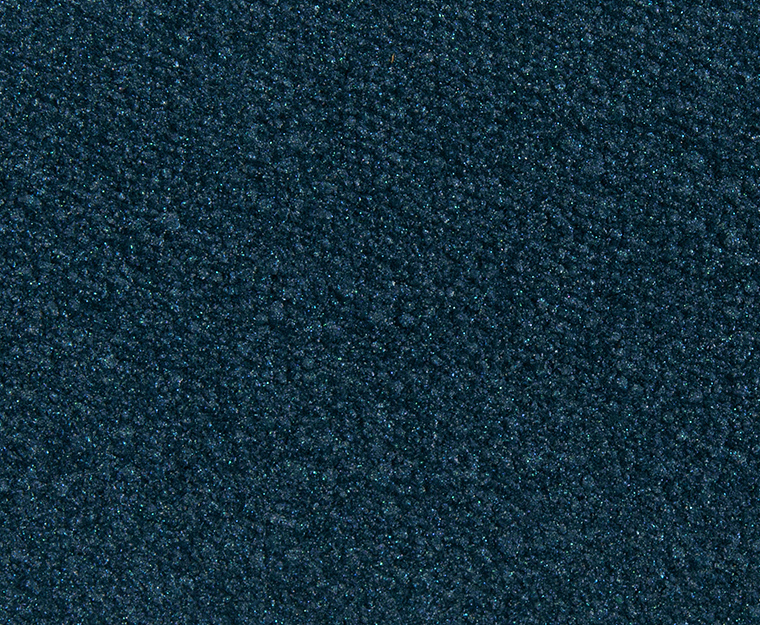
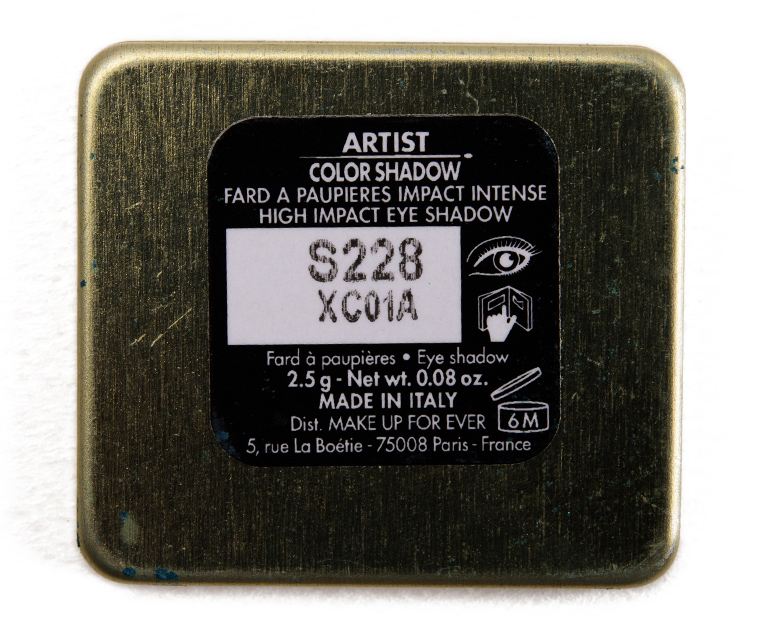

























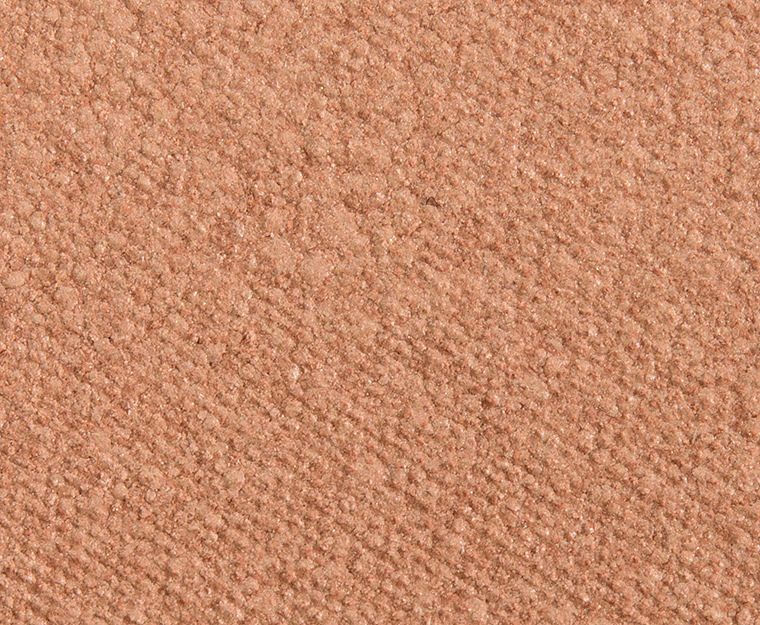
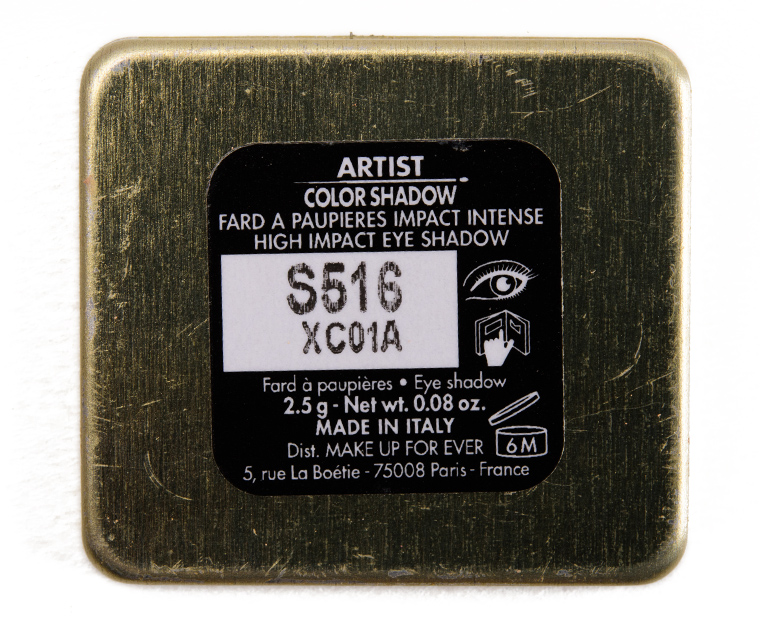
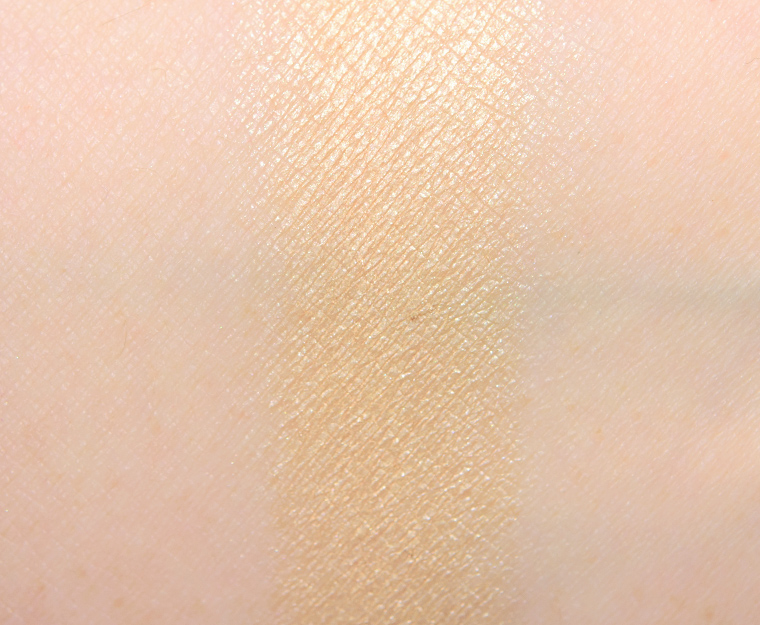






I’m sad about what happened to the matte blues here! The old ones were actually blue and scored better and/or swatched better than the new ones. Why MUFE, why?
Well, tsk, tsk, tsk at MUFE for wrecking what *were* some fabulous teals! Between this and their messing up Blueberry, Black Purple, Pearl and Purple, and now Petrol Blue, Prussian Blue and Blue Cedar, I’m feeling worried for the brand.
Wish I could get ahold of a few of the OG’s, but there’s not much in stores left. Definately none of my personal faves.
That Acidic Green looks absolutely gorgeous! My heart wept when I saw that this collection was releasing with no matte green, but looking at the swatches of the new mattes, maybe I am happier without it. LOL. I feel like MUFE shadows had their time in the sun when they had that huge mega-release of Artist Shadows and now it seems as though they are trying to revamp them, but it’s not going to be an easy task to sell them to the market. Unfortunately for the individual eyeshadow market, consumers are wising up and realizing that individuals can be very costly (even just drugstore eyeshadows at ~$5 apiece!) and they would rather just have a palette. If they are going to keep pushing individuals, they need to be better — straight up. The point to individual eyeshadows (at least in my mind/eyes) is that the formulations are the MOST proprietary/brand-specific and perform the absolute best among their ranges. The majority of the mattes, and even some of the shimmers in this range, do not live up to that, which for a brand that isn’t even cruelty-free, makes the range a hard pass. That look you whipped together out of them is absolutely gorgeous, though! It’s giving me all the peacock fantasy!
Everything you said. Love the idea of singles, and do still need them in my repertoire, but they have to be outstanding or they’re not worth it, especially at this price.
Hmm – some of those blues are really patchy and not the usual MUFE quality.
Gorgeous eye look Christine.